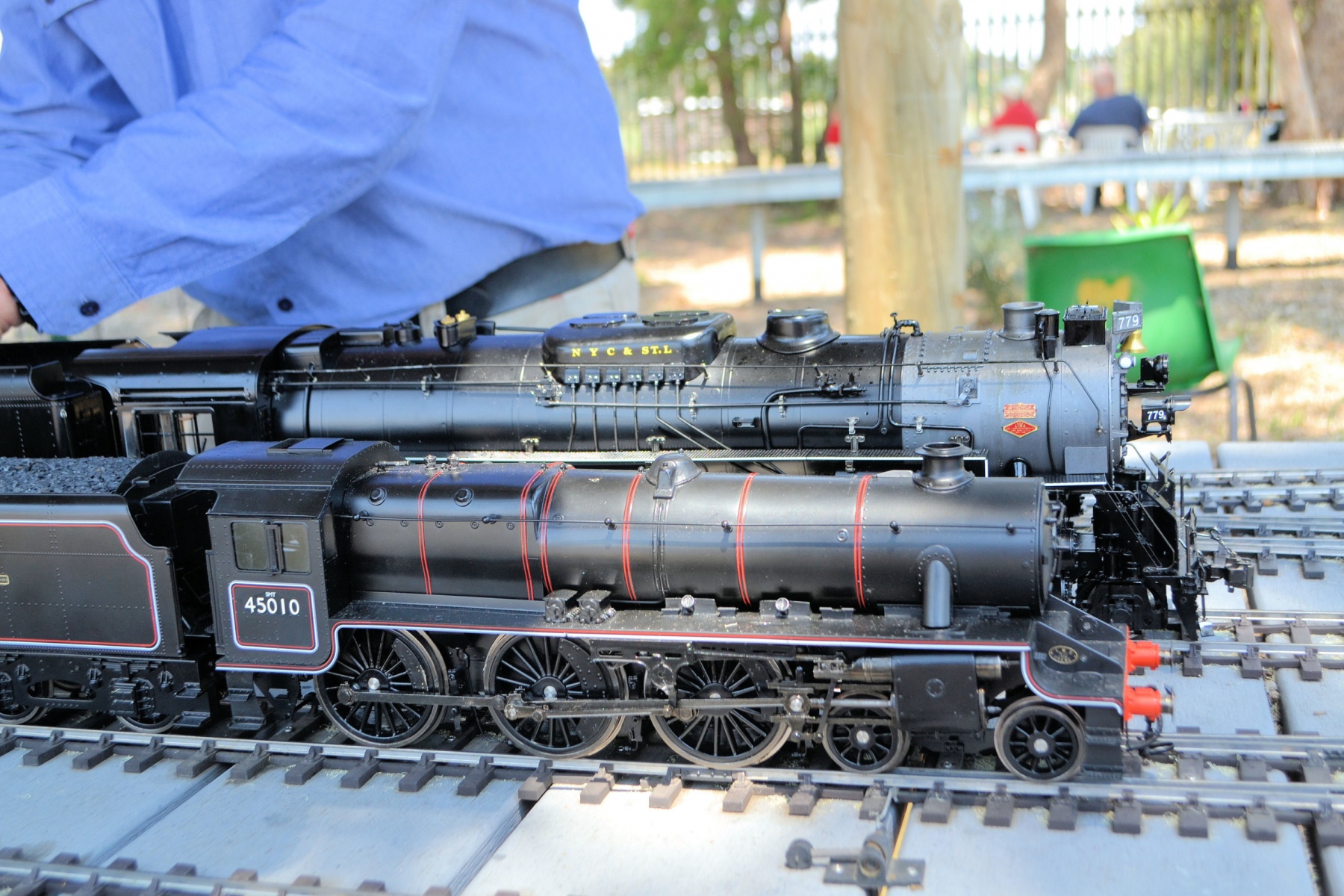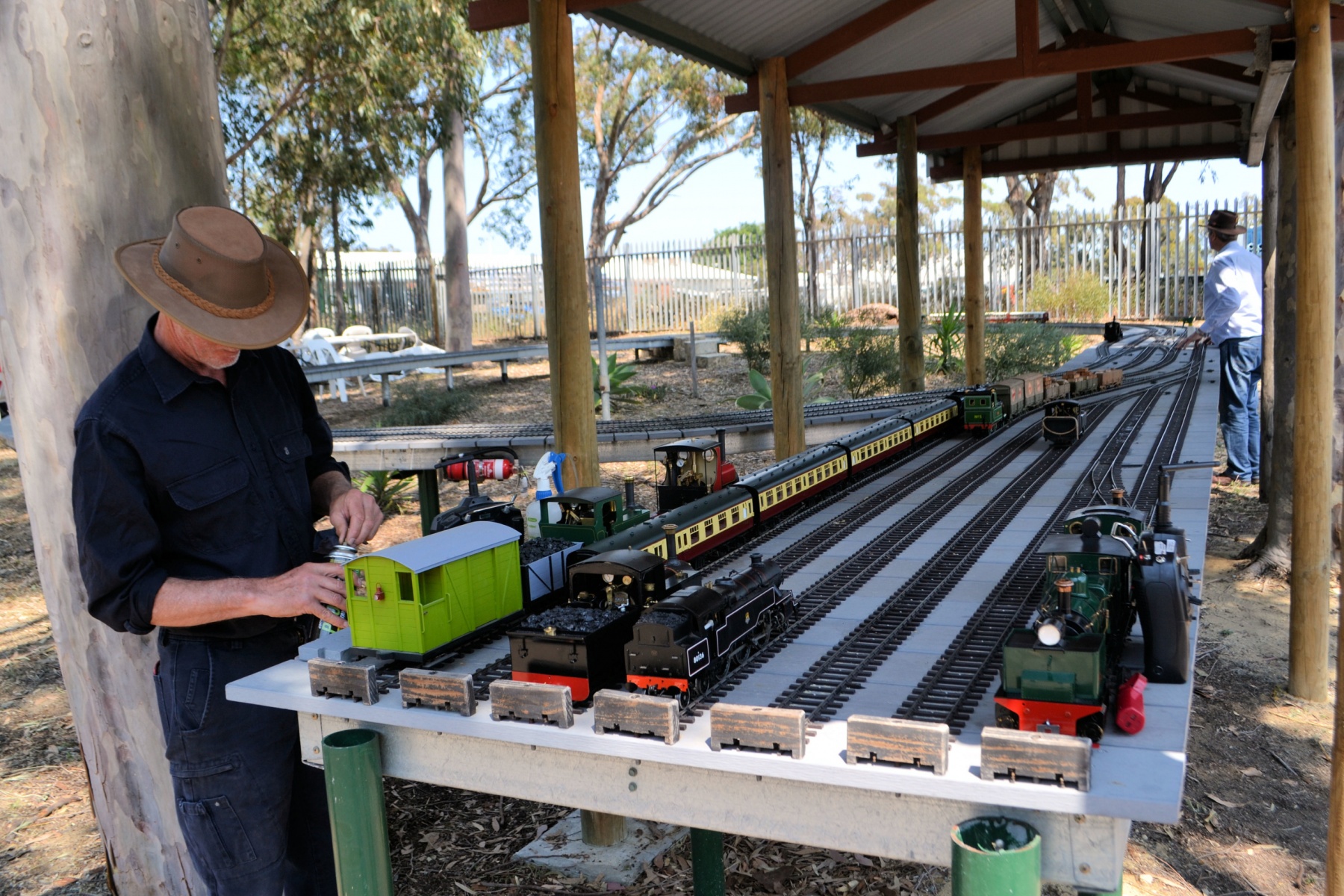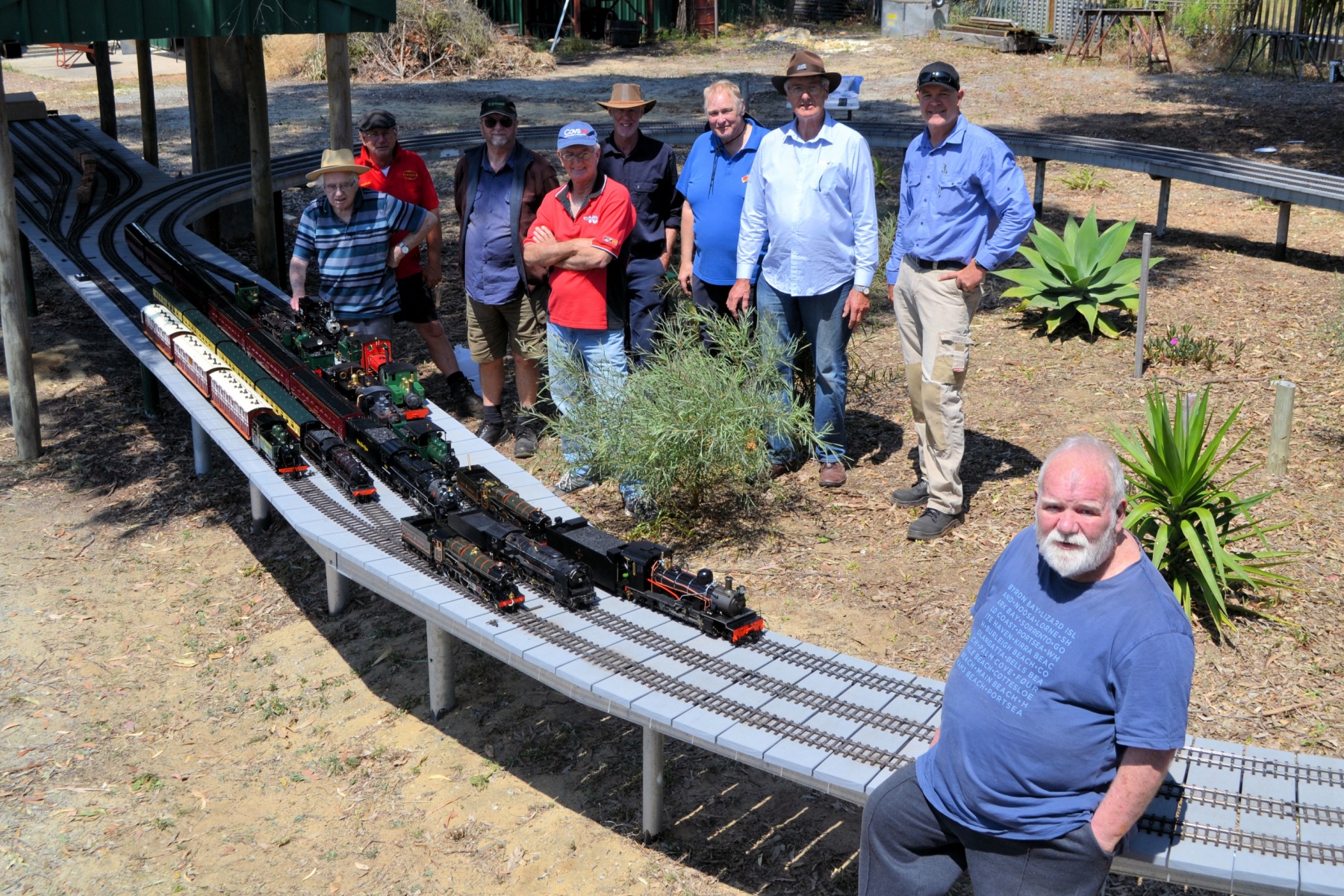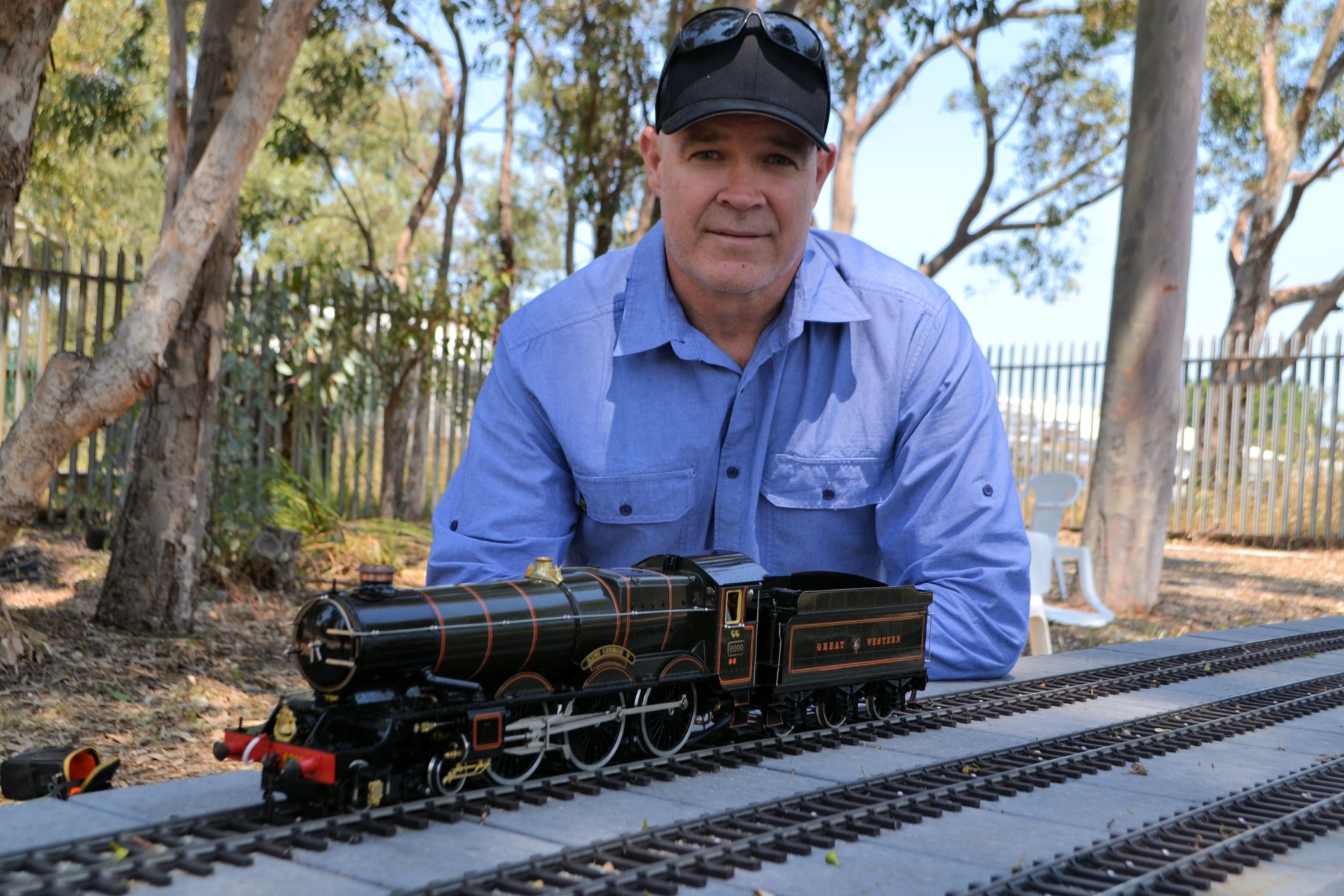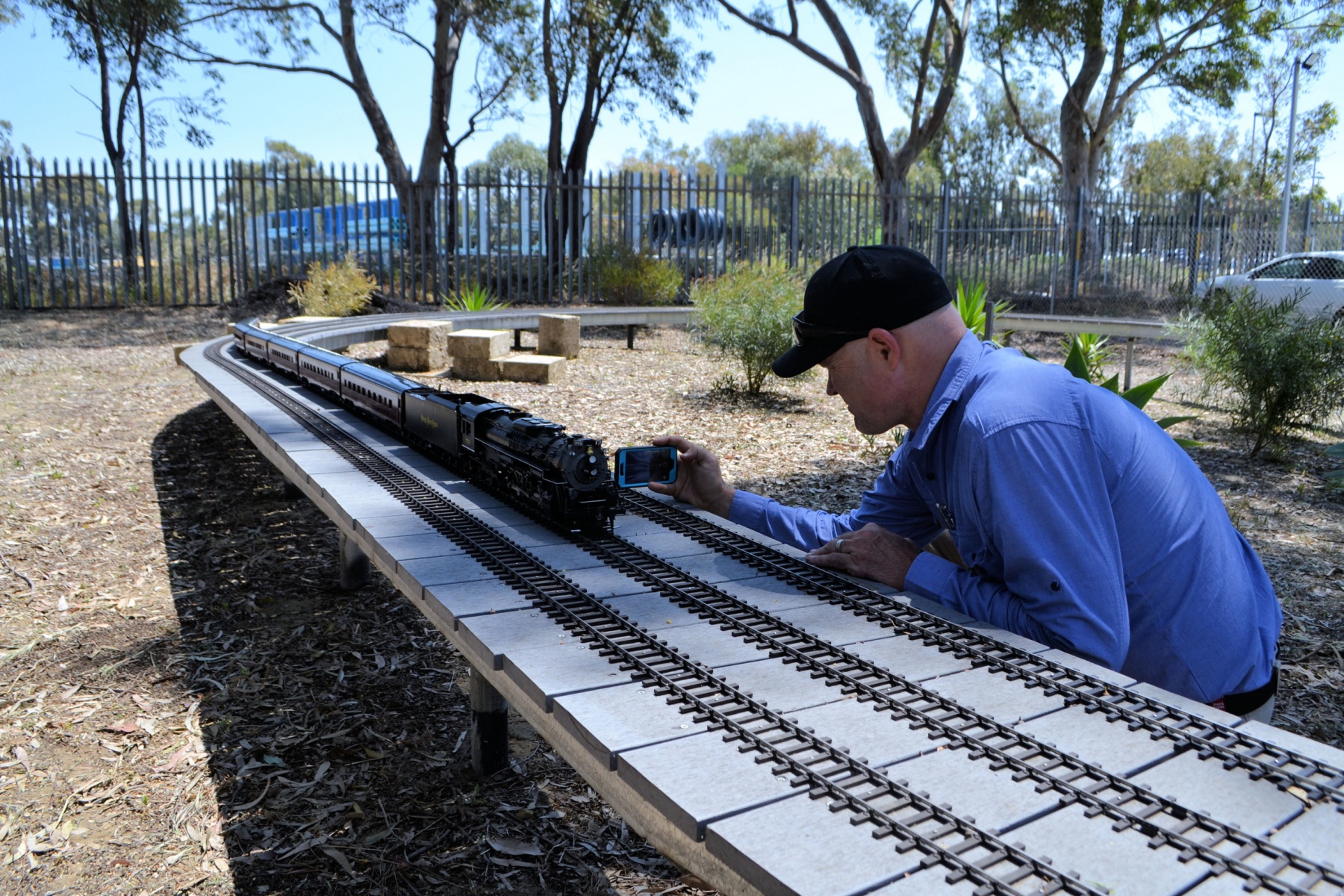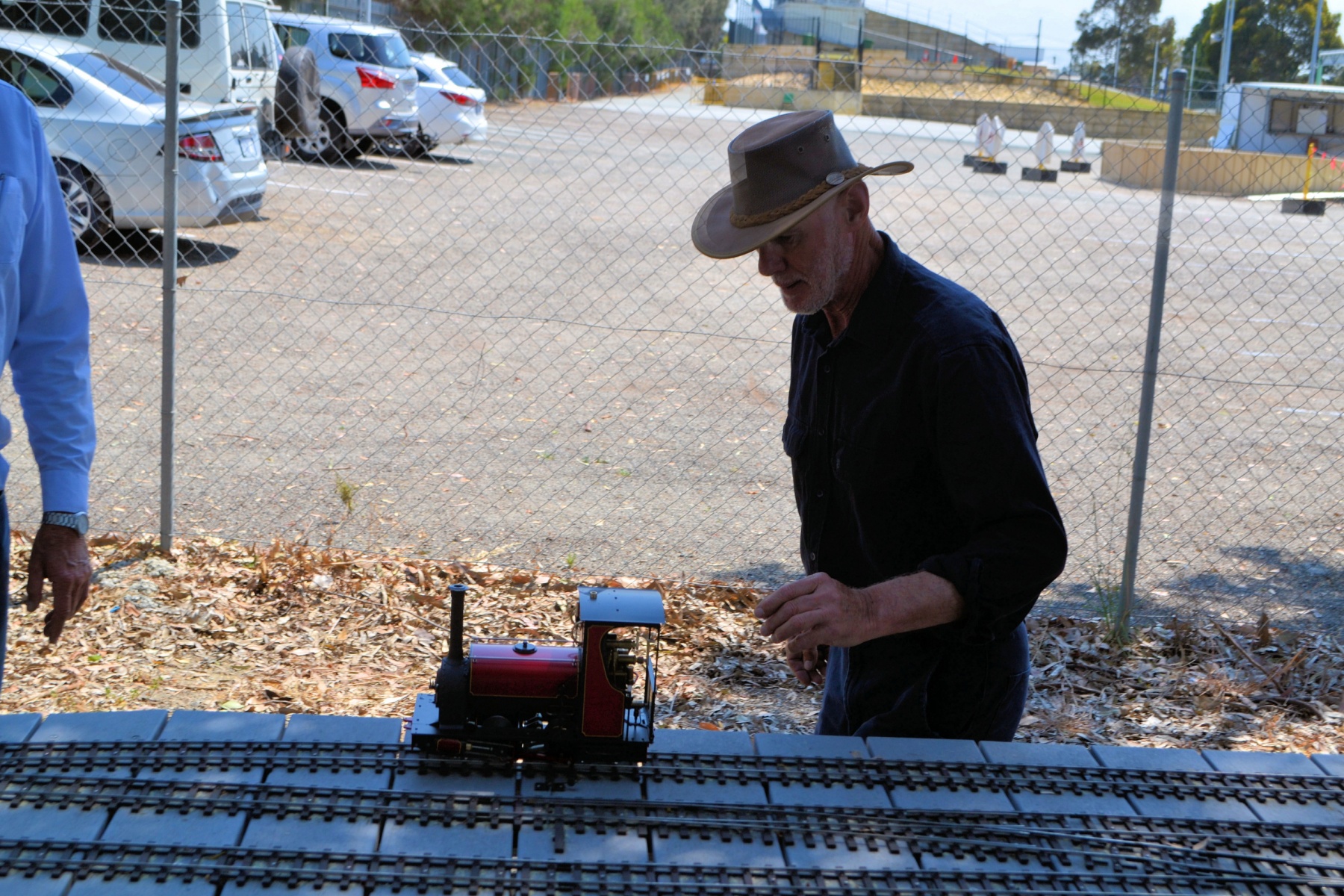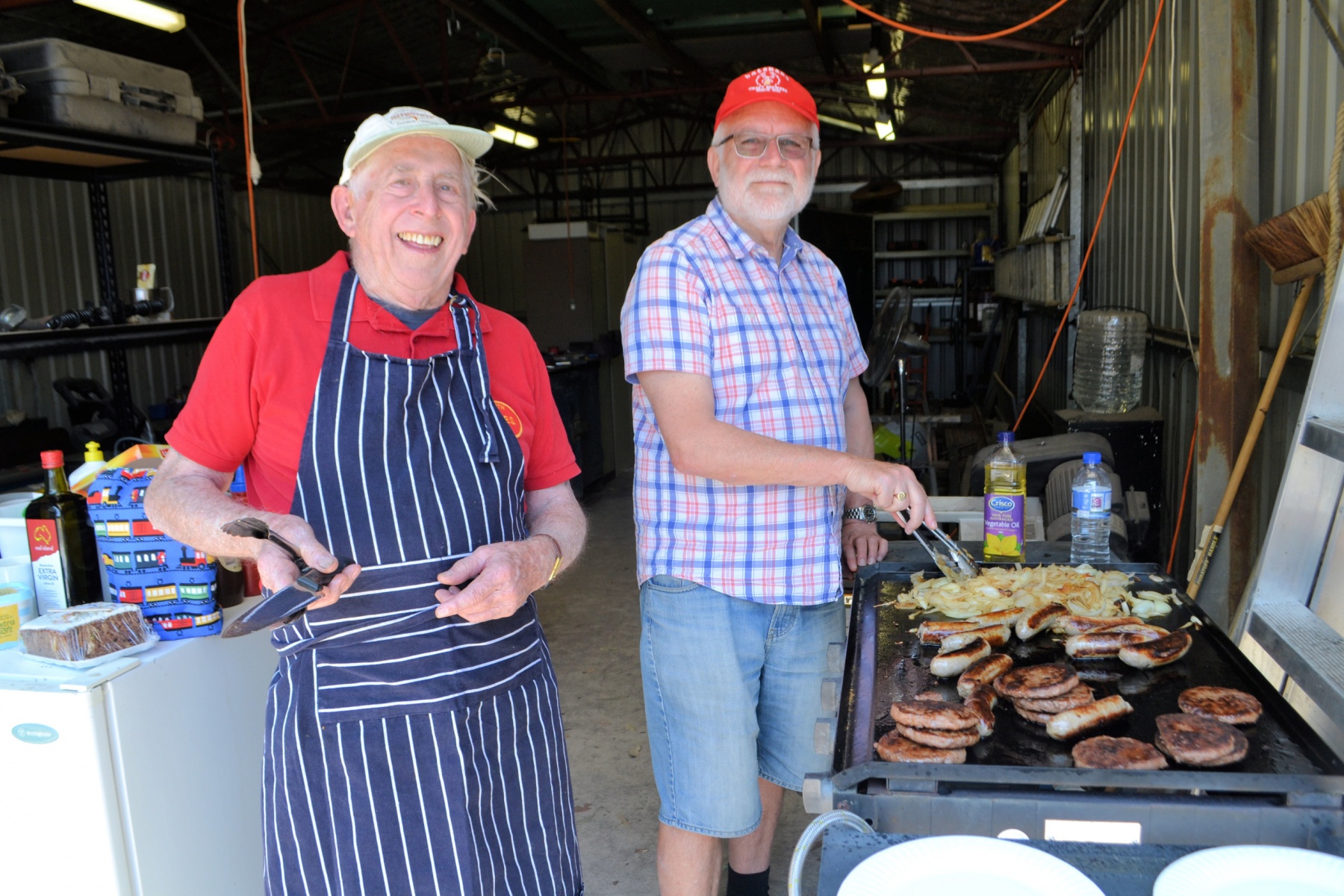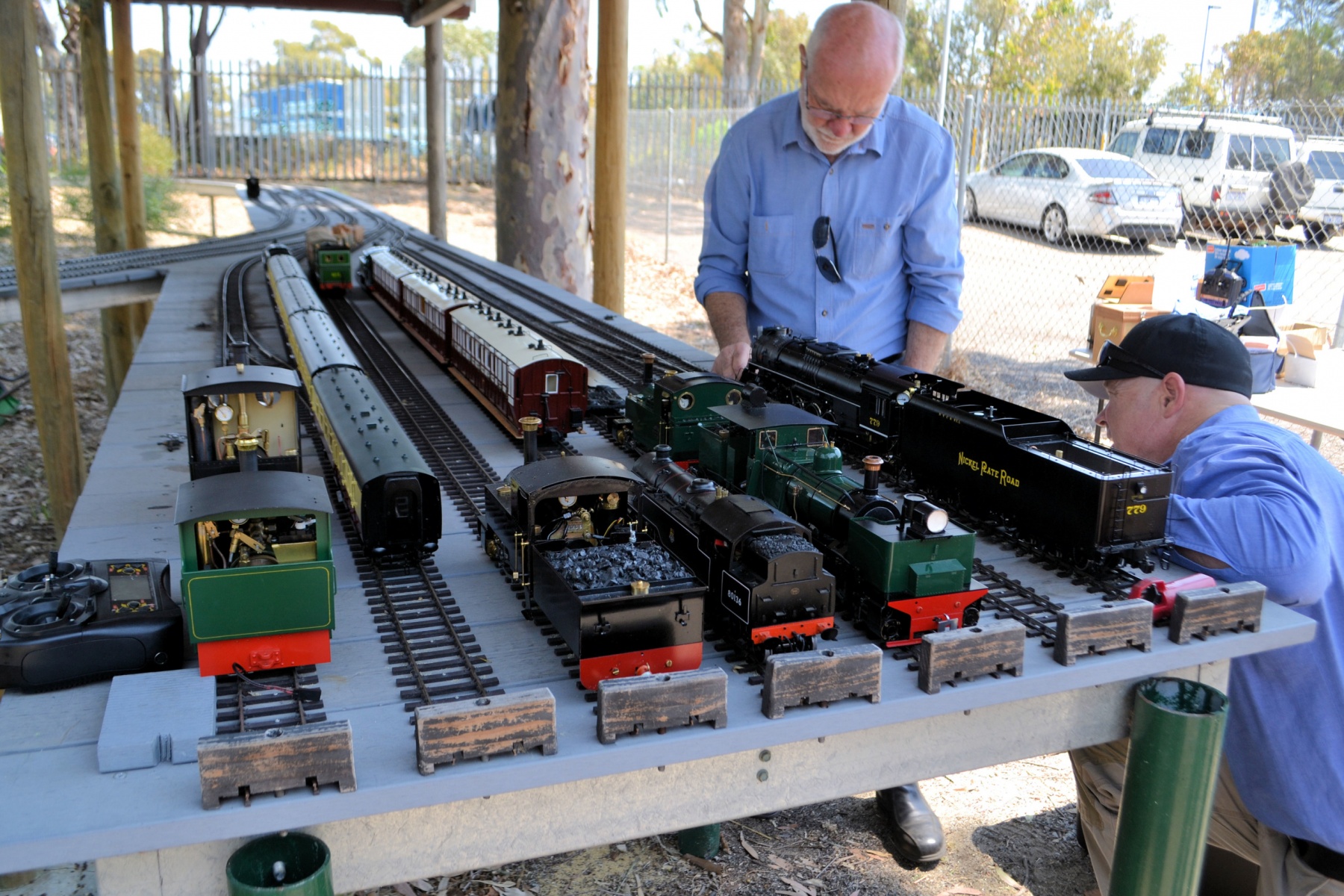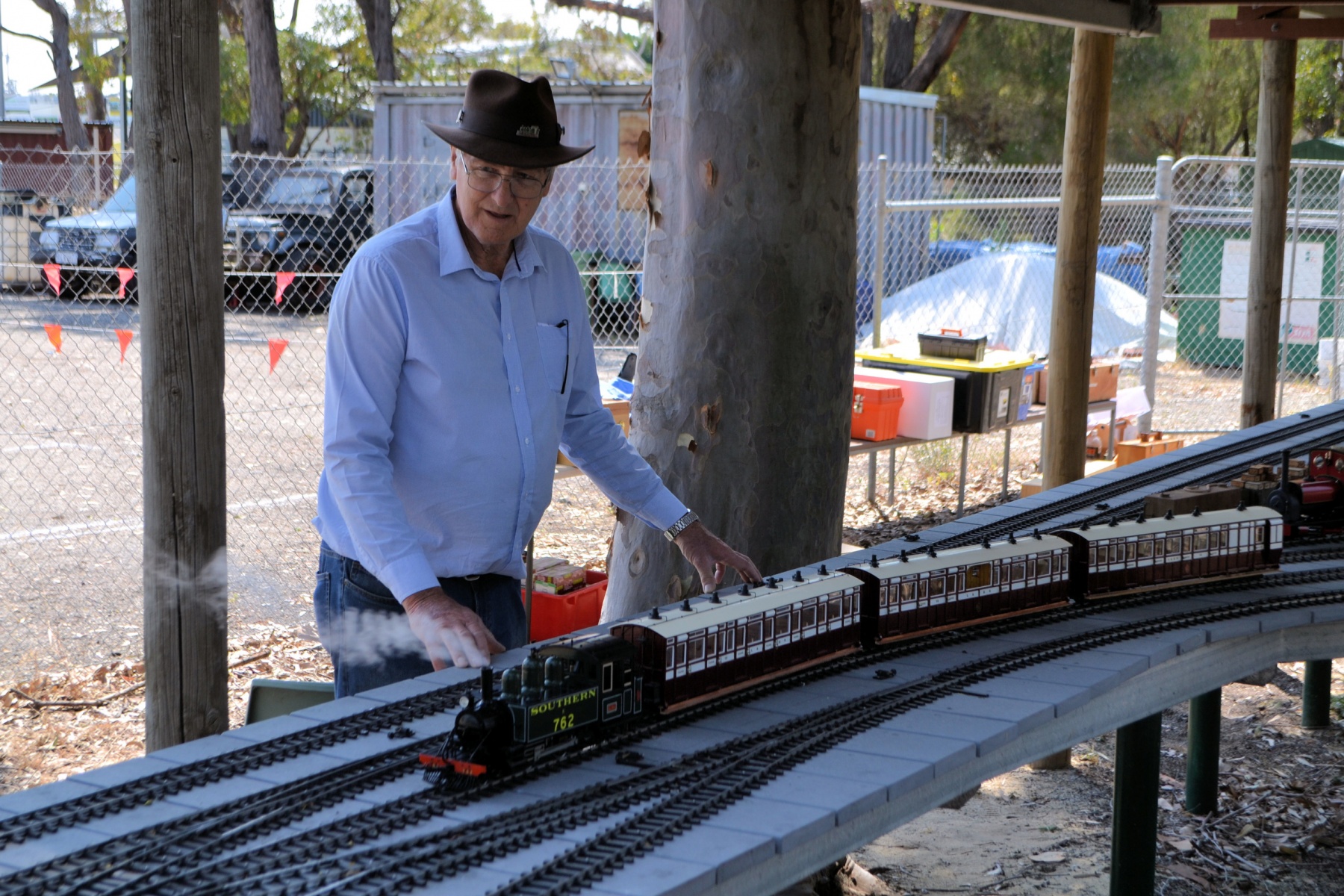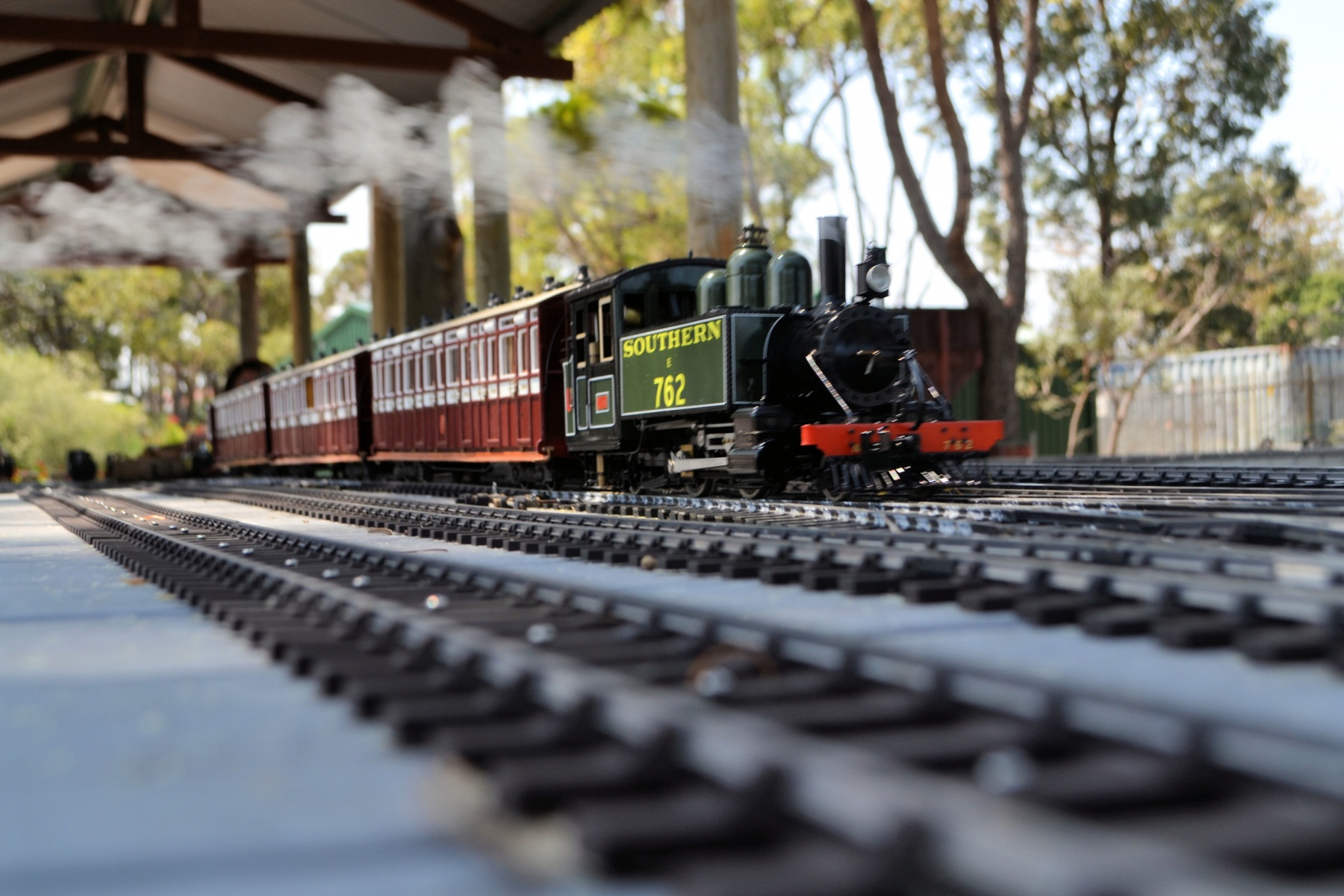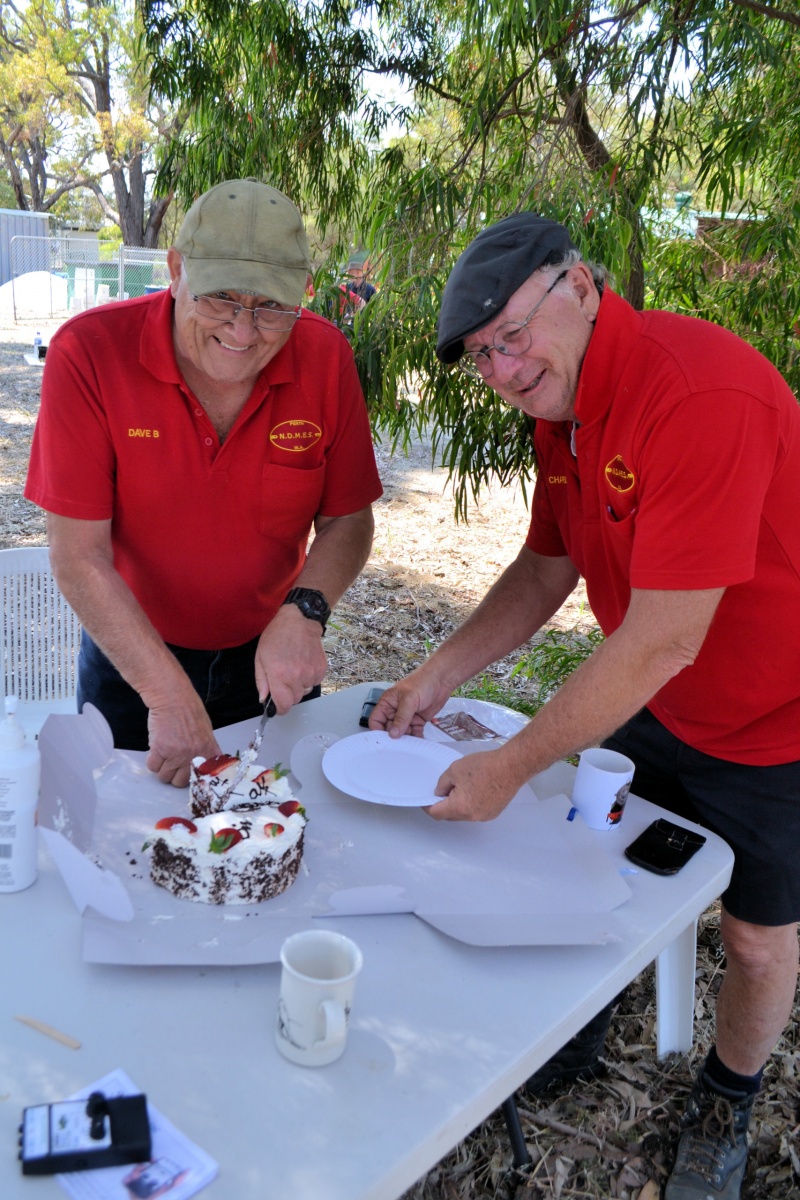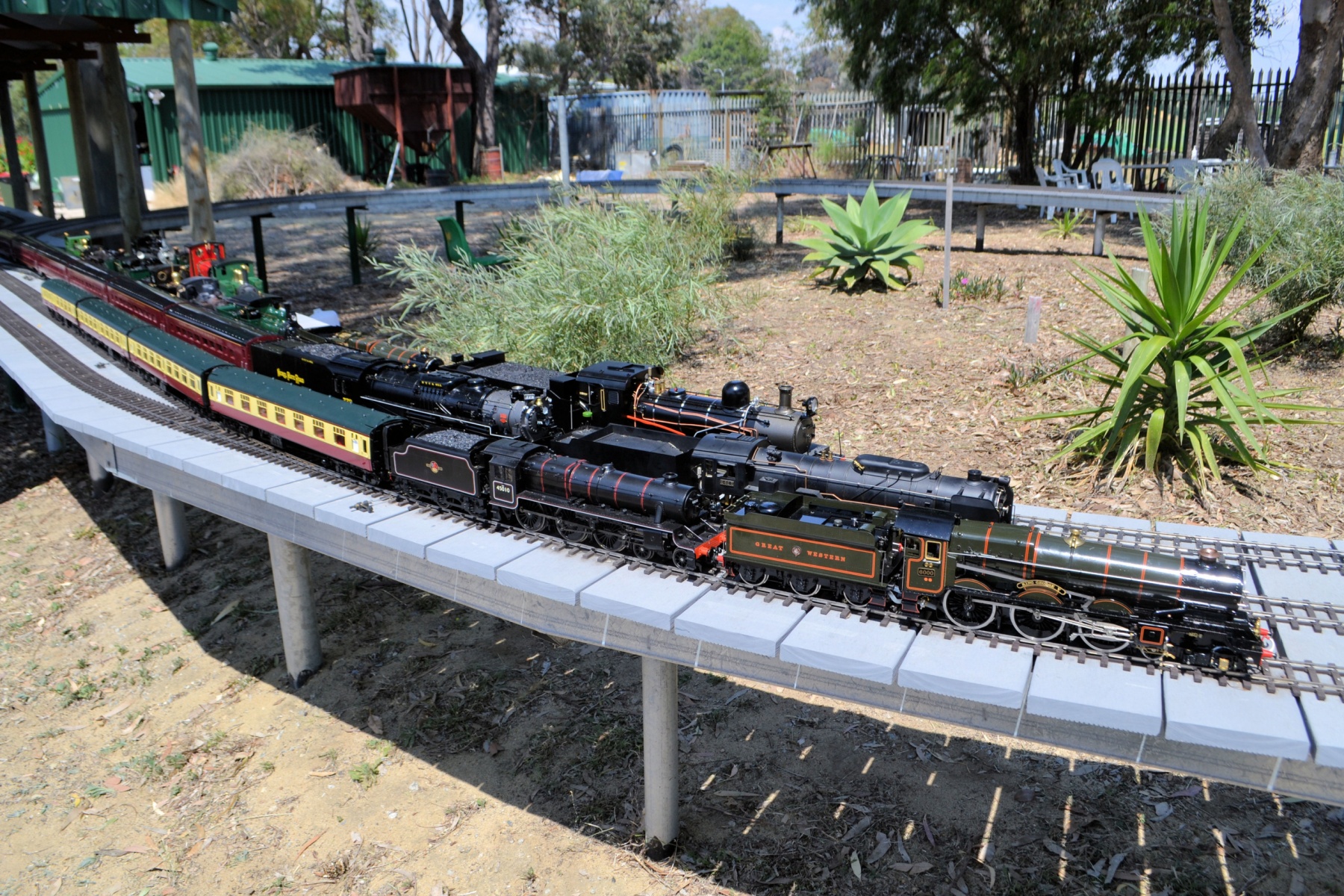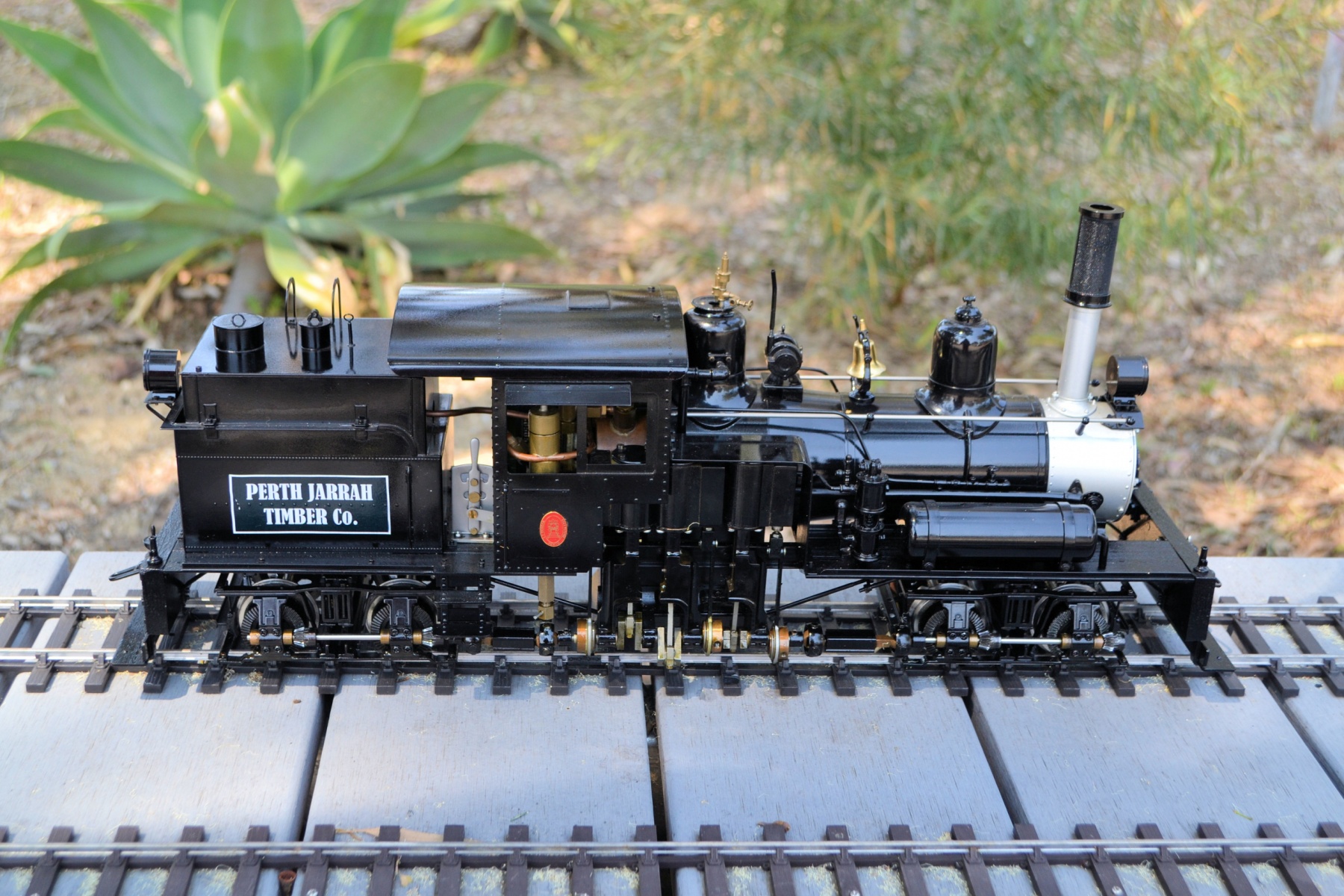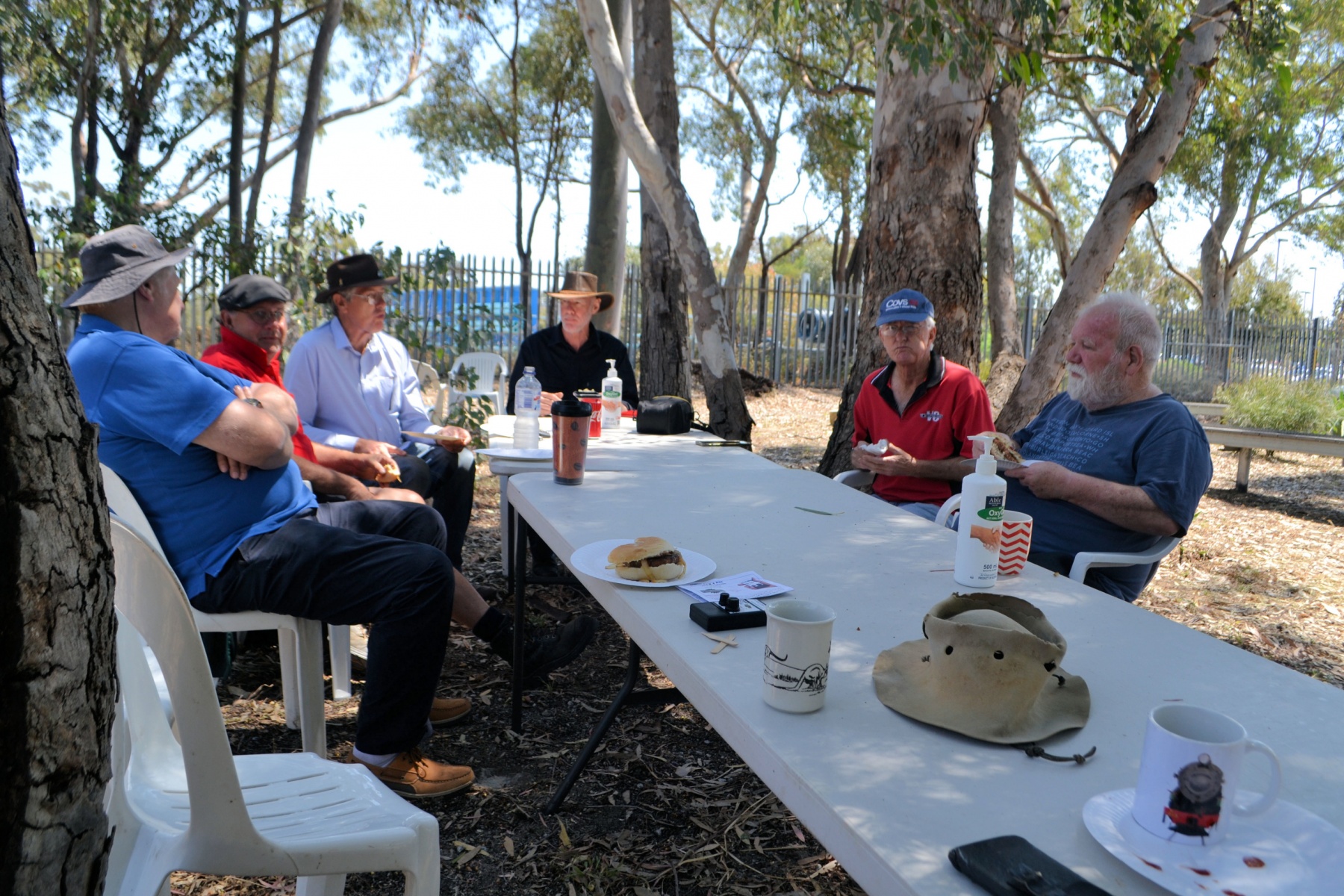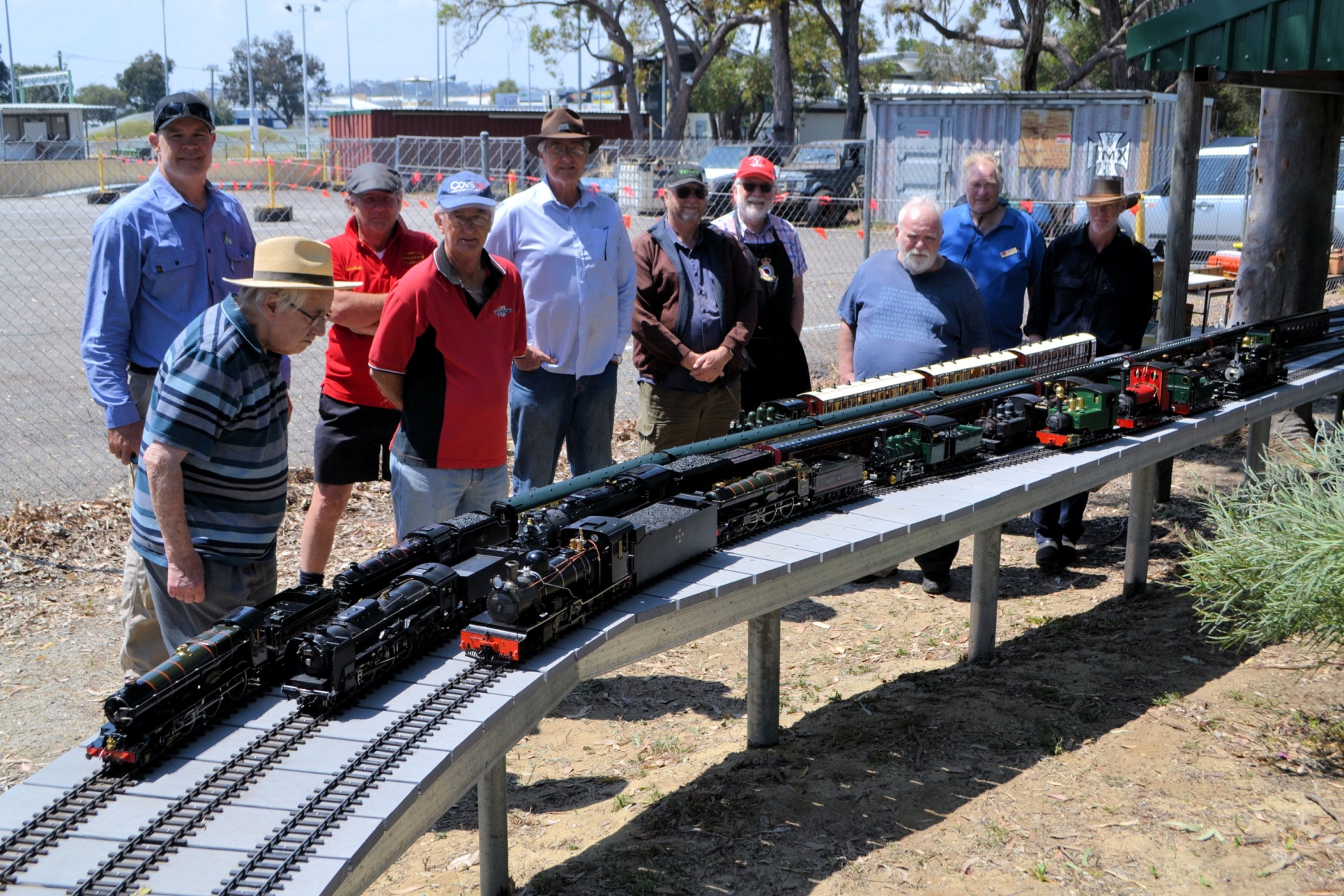All photos and introduction by Tom Winterbourn
Garden railways, beautiful miniature deceptions ..
Gauge 1 (45mm) is also known as our Garden Railway. Gauge 1 (45mm) sized locomotive are easier to run and store than the larger locomotives and cannot carry passengers. They can be powered by battery or steam. Steam power water is heated using either butane gas, methylated spirits or coal to produce the energy required. They are either radio controlled for realism or run freely. Below you can find interesting pictures and movies of this gauge created by our members:
The Construction of Our NDMES Garden Railway by Laurie Morgan
Our garden railway was started in August 2016 when the club decided that there were enough members interested in the smaller scales to invest money in a permanent track. There has been a huge increase worldwide in interest in the smaller scale models which can be bought ready- made or in kit form, and don’t take many years to make, but have all the same technical characteristics of the larger scales.
A gauge of 45mm was decided on since this allows use of 1/32 and 1/29 scale ‘mainline’ trains (Gauge 1) and narrow gauge trains to 1/19 and similar scales (16mm).
Originally John Shugg and John Turney started drawing the track layout. The proposed position of the track was somewhat controversial within the club and it was marked out with spray paint three times before its position was finally agreed on. Laurie Morgan, Richard Turner and Charles Coppack commenced construction by concreting in the uprights which had been obtained without cost by Charles and then bolted on ‘Z’ section cross pieces also provided for free by Charles.
John Shugg organised steel ‘C’ sections to be delivered and these were screwed to the cross pieces. At this stage the surface material had not been decided on and when some formwork ply was found at bargain prices, this was purchased with a view to covering it with roofing felt or rubberised paint. This proved a disastrous choice since the sun, the wind and the weather quickly began to affect the ply, with bubbles appearing on the only two panels already fitted.
The ply was found to be most welcome elsewhere and has since found other uses around the club. Consideration was then given to an alternative to ply and the consensus was that ‘Ekodeck’ although expensive, was the best material to use.
Ekodeck is a composite material which is a mix of plastic and wood which has excellent long term properties when used outside. Its enormous coefficient of expansion (about 30x that of steel!) was considered at length, but with the short ‘planks’ of material that were used, it was decided not to be a problem.
Ekodeck is flameproof, needs no painting and it can be cut with a tipped saw although it is very abrasive and blunts cutting tools quickly. 5.4m long lengths – about 135mm wide – were cut up by Laurie into hundreds of 60cm pieces, and then using a jig, these were cut again, tapered along both long edges so that the gap between ‘planks’ on the curves was a constant 6mm, giving a more pleasing appearance. The planks were screwed to the C section supports using ‘WingTek’ screws.
The height of the base was set using an old fashioned water level – a container of water connected to a long plastic pipe so that the level of water in it could be kept constant all round the track. The track has suffered some movement or settlement since (it has also been sat on and walked on!) and ‘humps’ are quite visible in one or two videos of trains travelling over the track. A good example is our video of a Britannia with a goods train leaving the steaming bay area. Clearly some re-setting of track height is in order. Otherwise as a bit of nostalgia, the track could be imagined to represent BR in the 50’s, suffering from lack of maintenance and in need of the gangers to work on it. The trains themselves don’t seem to mind!
John Shugg arranged for the import of scale ‘Gauge 1’ track with stainless rail and plastic sleepers and much time was spent at home assembling this into track sections before it was screwed to the base. Three loops of track were installed with a 7 road steaming bay, and two way and three way points were installed, all near the steaming bay so that crossovers to the centre or inner loops could be made without walking too far.
Bird droppings and debris from the trees dirtied the track of the steaming bays, so a roof was thought necessary to keep the track clean. Charles and Laurie provided most of the pine uprights, Laurie made the trusses – (from jarrah from Charles’ old house!) – Paul James provided the roof material from a dismantled carport, and a steel section with a bend in it at a convenient position (found in the rear car park!) was used to bridge a gap in supports caused by the presence of a large tree.
The track has proved itself to be a valuable asset for the club and on club run days there are usually more people running trains or spectating on the garden railway track than there are running large locos on the main tracks. Apart from the need to possibly reset the levels, it hasn’t required any maintenance other than brushing or blowing leaves off the rails after it has been out of use for a period.
Click on the icon to come on a visit our new Garden Railway site through our videos on YouTube. Our members Clayton Austin, Neil Blinco and Laurie Morgan have all created playlists for you to watch, showcasing our Garden Railway and the members’ models. Members how about adding some more videos of your own?



